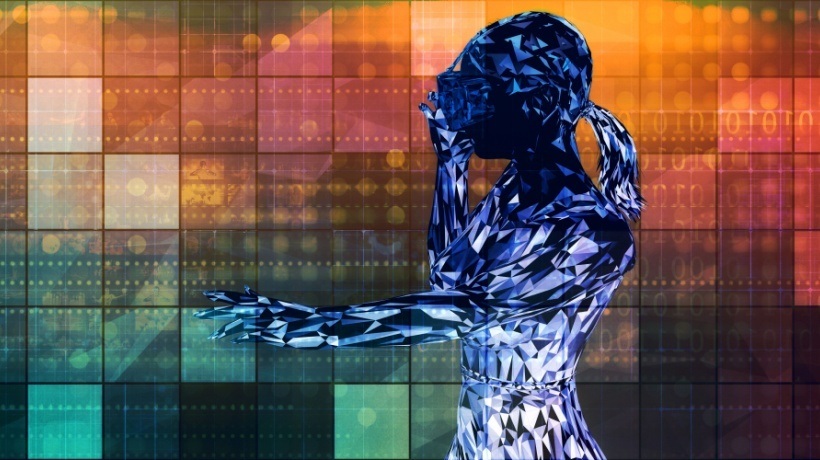Extended Reality In Learning: Revolutionizing Education
Unlocking A New Dimension Of Learning
Extended Reality (XR), encompassing Virtual Reality (VR), Augmented Reality (AR), and Mixed Reality (MR), is revolutionizing the Learning and Development (L&D) landscape. This cutting-edge technology offers immersive and interactive experiences that can profoundly transform traditional education and training methods.
These immersive technologies are poised to play a pivotal role in the future of education. AR, for instance, can animate subjects by projecting digital elements into the classroom or overlaying graphics onto real-world objects. VR, on the other hand, can transport students to different places and times. A prime example is the Google Expeditions app, designed for classroom use with hundreds of adventures in history, science, arts, and the natural world. Students can virtually visit the Louvre or climb Mount Everest, creating memorable learning experiences.
The potential for making education more interactive and engaging with XR is immense. XR fosters a more experiential approach, enhancing information retention by facilitating learning through doing and seeing, as opposed to mere reading. Studies suggest that experiential learning can increase the quality and retention of knowledge by up to 90%. In essence, immersive metaverse technologies offer a remarkable opportunity to improve knowledge transfer.
While these benefits are significant for formal education, VR and AR also have transformative potential for lifelong learning. Immersive experiences can greatly enhance adult education, whether mastering an operation or diving deep into historical events.
Utility And Transformation Potential Of Extended Reality In Learning
1. Enhanced Engagement And Motivation
XR captures learners’ attention more effectively than conventional methods. Immersive environments foster deep engagement, making learning experiences more enjoyable and memorable. For instance, VR simulations can transport students to historical events or distant planets, sparking curiosity and enthusiasm.
2. Experiential Learning
XR enables experiential learning, where learners can practice skills in a safe, controlled environment. Medical students can perform virtual surgeries, engineering students can explore complex machinery, and trainees in hazardous professions can rehearse emergency procedures without real-world risks.
3. Personalized Learning Paths
XR can adapt to individual learning styles and paces. Interactive elements and immediate feedback allow learners to navigate through material in a manner best suited to their needs, promoting better understanding and retention.
4. Accessibility And Inclusivity
XR can bridge geographical and physical barriers, offering access to high-quality education and training resources globally. Students in remote areas can experience the same learning opportunities as those in urban centers. Additionally, XR can be tailored to accommodate learners with disabilities, providing inclusive education solutions.
Advantages
- Real-time interaction and collaboration
XR facilitates real-time interaction and collaboration among learners and instructors, regardless of their physical location. Virtual classrooms and labs enable group projects, discussions, and peer-to-peer learning, fostering a sense of community. - Cost-effective training solutions
XR can reduce training costs by minimizing the need for physical materials and on-site training sessions. Organizations can simulate complex environments and scenarios at a fraction of the cost, making training more efficient and scalable. - Enhanced data analytics
XR platforms can track and analyze learner interactions, providing valuable insights into learning behaviors and outcomes. This data can be used to refine instructional strategies and continuously improve learning experiences.
Instructional Strategies For Extended Reality In Learning
Immersive Storytelling
Leverage XR to create narrative-driven learning experiences. Storytelling can contextualize information, making it relatable and easier to grasp. For example, history lessons can be transformed into immersive journeys through time, where learners interact with historical figures and events.
Simulation-Based Learning
Develop simulations that mimic real-world scenarios relevant to the curriculum. This approach is particularly effective in fields requiring hands-on practice, such as healthcare, engineering, and emergency response.
Gamification
Integrate game elements into XR experiences to enhance engagement and motivation. Leaderboards, challenges, and rewards can make learning competitive and fun, encouraging learners to achieve their goals.
Blended Learning
Combine XR with traditional instructional methods to create a hybrid learning model. Use XR for practical, hands-on experiences while maintaining lectures, readings, and discussions to cover theoretical aspects.
Peer Collaboration
Design XR environments to facilitate peer-to-peer interaction and collaboration. Group projects and cooperative tasks can be more engaging and effective in a virtual setting, promoting teamwork and communication skills.
Conclusion
In conclusion, Extended Reality holds immense potential to revolutionize the Learning and Development industry. Its ability to create immersive, interactive, and personalized learning experiences can significantly enhance educational outcomes. By adopting innovative instructional strategies, educators and trainers can harness the power of XR to create more effective, inclusive, and engaging learning environments. As technology continues to evolve, integrating XR into education will undoubtedly play a pivotal role in shaping the future of learning.














Post Comment